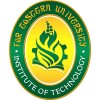Marie Luvett I. Goh
Archived Profile
This profile belongs to a former associate of FEU Institute of Technology and is preserved for historical reference. While they are no longer active, their past contributions and achievements remain available as part of the school's academic record. Please note that this information may not reflect their current status or affiliations.
Seminars and Trainings

Attendee
ISO 9001:2015 Retooling
Awarded by FEU Tech Quality Assurance Office on October 03, 2024
View Credential
Attendee
Mastering 5S: Enhancing Workplace Efficiency and Organization
Awarded by FEU Tech Quality Assurance Office on September 23, 2024
View Credential
Attendee
AI in the Workplace: Practical Applications for Educators and Associates to Improve Teaching and School Management
Awarded by Educational Innovation and Technology Hub on August 14, 2024
View Credential
Attendee
Enhancing Physical and Mental Resilience in the Workplace
Awarded by FEU Tech Human Resources Office on August 05, 2024
View Credential
Attendee
Modern Learners, Modern Resources: A Primer on the Utilization of Academic Technologies
Awarded by Educational Innovation and Technology Hub on August 29, 2023
View CredentialResearch Publications
Powered by:

Book Chapter · 10.1007/978-981-19-7663-6_13
BALANGAY: A Web-Based Document Request and Incident Reporting System with Decision Support for Barangay Program DevelopmentLecture Notes in Networks and Systems, (2023), pp. 127-136
E-Government systems have brought significant changes on the way public services are easily being delivered nowadays. This motivates the researchers to contribute to this innovation by developing a system named “BALANGAY” which makes barangay services more accessible to the constituents. This is anchored with the objectives of the study which is mainly to build a centralized database for barangays and design modules with the purpose of streamlining barangay processes. Part of it is to generate an incident heatmap that will assist barangay officials in creating better programs and project developments. The study is a combination of qualitative and quantitative type of research which is reflected on the use of interview and survey questionnaires. An iterative waterfall methodology was also adopted as a guide in the development process. Meanwhile, the ISO 9126 Software Quality Model was used in the system evaluation wherein each response is measured using the 5-point Likert scale and respondents were selected using purposive sampling. The result shows that out of sixteen (16) barangay constituents and sixteen (16) IT experts who participated, most of them were very satisfied with the system with a weighted mean of 4.45 and a verbal interpretation of “Very Satisfied”.

Conference Paper · 10.1109/ICIPMC58929.2023.00022
Dynamic Digital Signage System: A Cost-Effective and Unified Web-Based Solution for Content and Analytics Management2023 2nd International Conference on Image Processing and Media Computing (ICIPMC), (2023), pp. 89-94
While several content management systems (CMS) and audience analytics tools are available for digital signage in the market, they are often sold separately and can be expensive. Therefore, this project aims to design a cost-effective and unified web-based solution for digital signage that combines content management and audience analytics functions, reducing the need for multiple purchases. This can be achieved by utilizing Raspberry Pi technology, known for its cost-effectiveness and versatility in integrations, along with a face recognition camera and machine learning methods. This proof of concept demonstrates the integration of these components to create a dynamic digital signage system. Overall, this project has the potential to offer an affordable solution for companies aiming to efficiently manage and optimize their digital marketing strategies, especially in the Digital Out-of-Home (DOOH) Advertising space.

Book Chapter · 10.1007/978-981-16-6369-7_43
HWYL: An Edutainment Based Mobile Phone Game Designed to Raise Awareness on Environmental ManagementLecture Notes in Networks and Systems, (2022), pp. 475-482
HWYL (meaning “a stirring feeling of emotional motivation and energy”) is a 3D isometric puzzle adventure game for Android devices. The whole game revolves around the adventures of Thomas as he unknowingly helps the mayor and the townspeople in solving environmental problems through playing meaningful mini games. The mini games comprise of different casual games that focus on teaching the players about the major environmental issues such as ozone depletion, and disposal of wastes. The interactive learning experience educates players how to mitigate environmental problems. The game garnered very satisfactory results from the play testers, proving that the game has been successful in promoting environmental awareness through edutainment, and the game as a system works as intended with compliance to software quality factors.

Conference Paper · 10.1109/HNICEM57413.2022.10109595
OPEES: Online Proctored Entrance Examination System with Degree Program Recommender for Colleges and Universities2022 IEEE 14th International Conference on Humanoid, Nanotechnology, Information Technology, Communication and Control, Environment, and Management (HNICEM), (2022), pp. 1-6
The college entrance examination is vital for program admission. Typically, entrance examinations are conducted onsite using paper and pens. When the COVID-19 pandemic hit, the entrance examination was lifted and physical gatherings were prohibited. Since many schools cannot offer an online admissions exam, they rely on grades and interviews to admit and qualify students for degree programs. However, academic standards differ between schools, and grades may not be enough to assess students' capacity. Thus, this study aims to develop an Online Proctored Entrance Examination System (OPEES) with Degree Program Recommender for colleges and universities to help institutions administer onsite or online entrance tests and generate course suggestions using a rulebased algorithm. The study employed the scrum methodology in software development. OPEES allows applicants to submit applications online, and institutions can manage user accounts, tailor exams and degree programs’ criteria, manage exam dates, and assign proctors. Online proctoring using Jitsi, an opensource multiplatform voice, video, and instant messaging tool with end-to-end encryption, ensures exam integrity. The system’s features were evaluated by 102 respondents, comprised of end-users (students and school personnel) and IT professionals, using the FURPS (Functionality, Usability, Reliability, Performance, and Supportability) software quality model. In the software evaluation, the overall system proved to be functional as perceived by the respondents, as manifested by the mean rating of 4.61. In conclusion, the system's architecture was deemed feasible and offers a better way to streamline admission examinations and determine a student’s applicable degree program by enabling institutions to customize their exams and degree program requirements. It will be beneficial to look into recommendation system algorithms and historical enrollment data to improve the system’s use case.

Journal Article · 10.18178/ijiet.2020.10.10.1449
Classification Algorithm Accuracy Improvement for Student Graduation Prediction Using Ensemble ModelInternational Journal of Information and Education Technology, (2020), Vol. 10, No. 10, pp. 723-727
According to National Center for Education Statistics, almost half of the first-time freshmen full time students who began seeking a bachelor’s degree do not graduate. The imbalance between the student enrolment and student graduation can be solved by early predicting and identifying students who are prone of not having graduation on time, so proper remediation and retention policies can be formulated and implemented by institutions. The study focused on the application of the ensemble models in predicting student graduation. Ensemble modeling is the process of running two or more related but different analytical models and then synthesizing the results into a single score or spread in order to improve the accuracy of predictive analytics and data mining applications. The study recorded an increase of classification accuracy in predicting student graduation using ensemble models and combining multiple algorithms.

